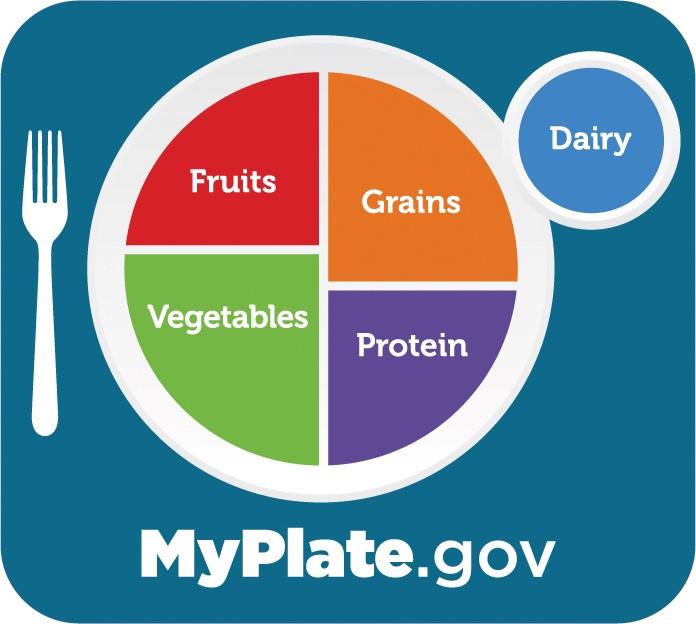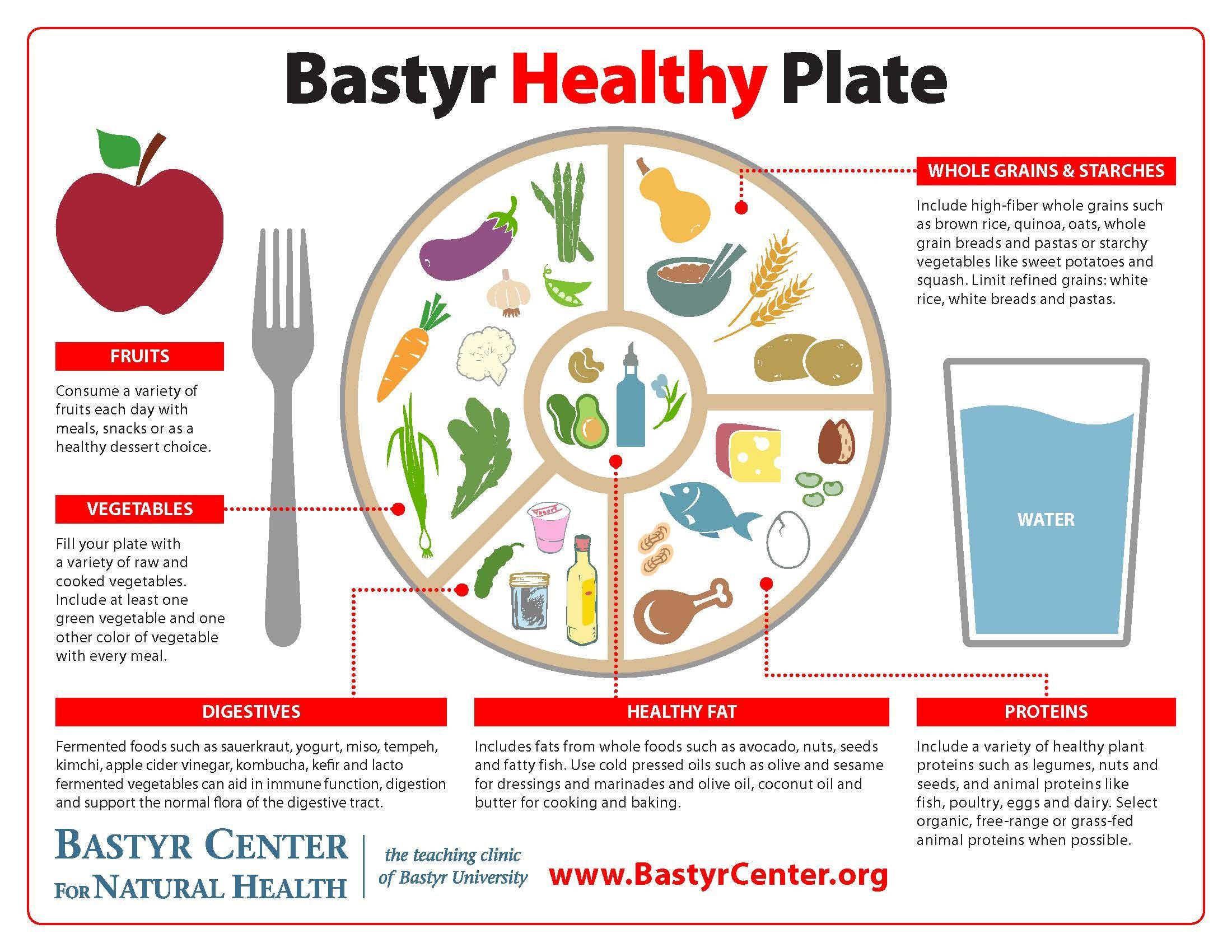Nutrition 101
By Terry Passano. RDN, FMN, University Dietitian
Nutrition information is everywhere – blogs, Instagram, influencers. It can take you down a rabbit hole more confusing than Alice in Wonderland. I’m going to clarify things with two simple models of how to balance your plate.
First, one everyone has seen at some time, maybe in elementary school: MyPlate from the U.S. Department of Agriculture.

MyPlate is a straightforward public health graphic. It’s effortless to compare this graphic to what is on your plate at mealtimes.
Basic MyPlate messages include:
- Make 1/2 your plate colorful fruits and vegetables
- Make 1/4 plate lean protein
- Make 1/4 plate grains
- Include dairy
- Make half your grains whole grains
- Protein choices include meats, poultry, eggs, fish, dairy, beans, legumes, peas, and nuts
MyPlate offers a great start to better eating for many Americans. As a nation, we eat too few fruits and vegetables and too many processed, convenience foods high in fat, sugar, additives and preservatives.
To get more detailed information on personalizing these recommendations based on your needs, myplate.gov has apps and much more information available on their site.
The second model is the Bastyr University Healthy Plate. This graphic comes in three versions, Bastyr Healthy Plate, Vegan Healthy Plate, and the Vegetarian Healthy Plate.

Bastyr University Healthy Plate Graphic
The Bastyr plates include some very nice upgrades and several similarities to MyPlate.
- About 1/2 the plate is again fruits and vegetables, with fruit over to the side.
- Raw and cooked vegetables are encouraged, with one green and one of another color on every plate.
The color in plant foods indicates what phytonutrients they contain. There are thousands of phytonutrients, each providing its particular benefit to us working as anti-inflammatories, antioxidants, anti-virals, bioactives and more. All of these nutrients join our body to prevent and fight disease and keep us living well. The benefits of having several colors of plant foods on our plate are plentiful. Suffice to say, color is your friend.
- Aim for a 1/4 plate of whole grains and starches. Bastyr ups the whole grain goal. They also add starchy vegetables here; MyPlate has them in with vegetables.
Starchy vegetables include corn, peas, lima beans, potatoes, sweet potatoes and winter squash. These vegetables have about the same calories per serving as grains due to their higher carbohydrate content. The non-starchy vegetables seen in the vegetable portion of the plate are lower in carbohydrates.
Whole grains offer significant nutritional benefits; however, making 100% of your grains whole grains may not be convenient, palatable or attainable for everyone. Start by using whole-grain some of the time. Change out your white rice for brown or another grain such as quinoa or bulgar; opt for whole-grain bread and cereals at least sometimes.
- Water takes the place of MyPlate’s milk. Water is what we should drink most often. Not everyone drinks milk due to lactose intolerance, allergy or preference. Dairy products are found in the protein section.
- Fats are seen in the center of the plate. Our body requires fats. Healthy ones include those found in avocado, olives, nuts and seeds. These are all great to snack on or add to other dishes like salads, sandwiches and meals.
- Digestives is a section much appreciated by nutritionists! These are foods that support our microbiome and so benefit our health in a plethora of ways. The foods listed in this section provide probiotics and prebiotics. To learn more about the microbiome and its importance to your health, read this. To learn more about how what you eat influences your microbiome, go here.
- Proteins – this section is the one that varies the most between the Healthy, Vegetarian and Vegan plates. Appropriate choices for each eating style are listed on the graphics.
These are just two examples of basic eating guidelines generalized for everyone. Dining Services offers nutrition counseling sessions free of charge for information on what foods are best for you individually. Contact me to ask any questions or schedule an appointment: thpassano@salisbury.edu. Commons Room 151
